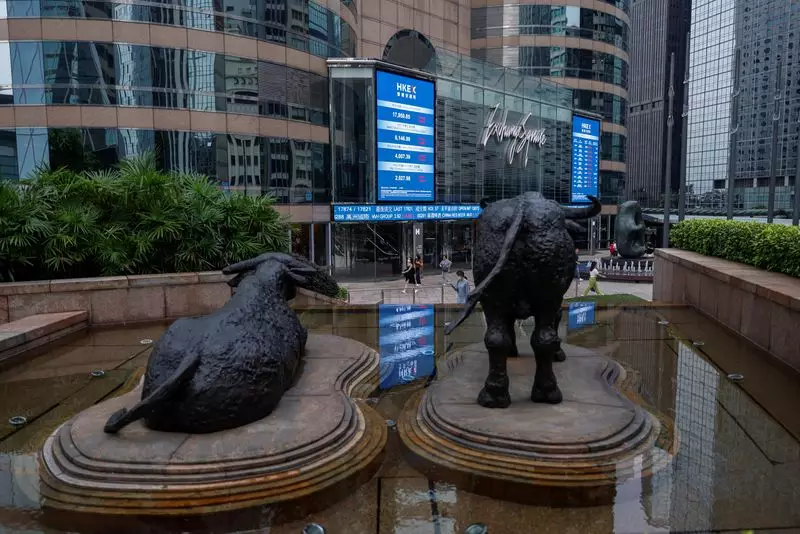In the world of finance, the reaction to economic news can often sway market sentiments dramatically. Recent trading sessions reveal a notable apprehension among investors regarding the prospects of a robust Chinese economic recovery. Following a period of volatility, the downturn in Chinese shares and commodities raises questions about the resilience of global markets, while simultaneously highlighting broader economic dynamics.
On Wednesday, Chinese shares experienced a significant drop, losing approximately 3% as mounting uncertainty cast shadows over the country’s economic outlook. Investors had clung to the hope of a swift rebound, but such optimism was tempered after a rather uninspiring display from China’s National Development and Reform Commission (NDRC). Their recent announcement failed to provide substantial details on stimulus measures, leading to a reassessment of potential recovery timelines. This sentiment was reflected not only in the mainland shares but also resonated through the commodities market, where prices for oil and metals plunged, further contributing to investor caution.
The decline highlighted the fragility of the perceived economic growth momentum, with many market participants recalibrating their expectations. Mizuho’s head of macro research, Vishnu Varathan, remarked on the disappointment surrounding the absence of stimulus details, pointing out that it might be premature to expect immediate revitalization. The potential for further measures from authorities remains, but without a clearer timeframe or indicators, confidence lingers at a precarious balance.
The ripple effects of China’s market performance were felt across global commodities. Brent crude futures, which had witnessed a sharp decline of 4.6% overnight, stabilized at $77.79 per barrel, reflecting a cautious optimism among traders that a broader recovery is still possible. However, iron ore, a major commodity tied to Chinese demand, found itself under pressure, having dropped significantly before finding slight support in Singapore.
Meanwhile, events in New Zealand added another layer to the complex global narrative. The Reserve Bank of New Zealand’s recent decision to cut interest rates by 50 basis points and express a pessimistic outlook on the economy sent the New Zealand dollar tumbling 0.6%. This move not only signifies regional economic challenges but also compels traders to brace for potentially more cuts if the economic situation doesn’t improve.
Contrasting the Asian markets, U.S. equity futures showed steadiness, hinting at the country’s economy’s underlying stability. Influential statements from Federal Reserve officials regarding the health of the U.S. economy, particularly in light of last week’s robust jobs report, lend some comfort to investors. New York Fed President John Williams echoed sentiments of confidence, suggesting that the cooling inflation could pave the way for more manageable interest rate adjustments.
Market analysts seem to feel that the Fed’s cautious approach toward future monetary policy adjustments underscores a commitment to fostering a “soft landing” for the economy. Instead of drastic rate hikes, the focus appears to be on nurturing the economic rebound while assessing external pressures that could influence stability.
As market forecasts become increasingly skewed due to external pressures, investors are faced with navigating a notably volatile financial landscape. No longer can one simply rely on the potential for a Chinese economic rebound to dictate investment strategies. Instead, a comprehensive approach, amalgamating insights across various global markets, will be vital for informed decision-making.
The upcoming minutes from the Federal Reserve’s meetings are likely to be scrutinized, as they will shed light on the central bank’s perspective and future policy directions. Market watchers will also be attentive to further strategic comments from key Fed officials, as these insights will play a crucial role in shaping sentiment in the coming weeks.
In sum, while optimism still permeates certain sectors, a structured and critical assessment of both local and global economic indicators will determine the course of market trajectories as investors brace for potential shifts in the economic landscape ahead.

